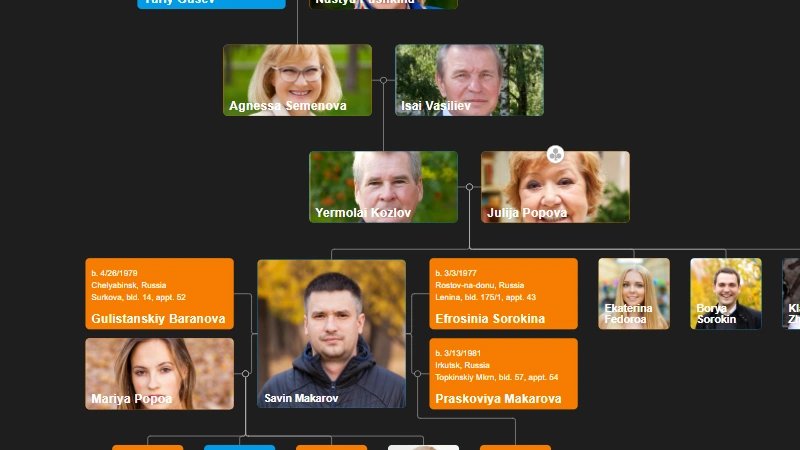JSON Export Slinks with Nodes in OrgChart JS
JSON Export Slinks with Nodes in OrgChart JS
How to export Slinks along with nodes in JSON with OrgChart JS
Why Export Slinks?
Slinks are an invaluable feature in organizational charts, as they represent relationships that don't fit into the standard parent-child hierarchy. They can be used to show:
Cross-departmental collaboration 🤝
Reporting structures to multiple managers
Task dependencies or special project assignments
Exporting this data ensures that these crucial relationships aren't lost when you save or share your chart. A simple JSON export of the nodes alone won't contain this information, which is stored separately in the chart's configuration.
The Solution: The onExportEnd Event
The key to exporting slinks is to use the onExportEnd event provided by OrgChart.js. This event fires after a successful export, allowing you to run custom code. We can use this event to check if the export type is JSON, and if so, initiate a second download for the slinks data.
Step 1: Configure a Custom Menu Item
First, let's create a custom menu option for our export. This makes it clear to the user that this specific export will include the slinks. We can name it "Export JSON with Slinks" in the menu configuration.
JavaScript
menu: {
json_export: { text: "Export JSON with Slinks" }
}
This will automatically trigger the default json_export function when clicked.
Step 2: Listen for the Export Event
Next, we add a listener for the onExportEnd event. This function receives an args object, which contains information about the completed export, including the file extension.
JavaScript
chart.onExportEnd((args) => {
// Check if the exported file type is JSON
if (args.ext == 'json') {
// If it is, call a function to save the slinks
saveJSON(chart.config.slinks);
}
});
When a user clicks our custom menu item, the chart will perform a standard JSON export first. Then, the onExportEnd event will fire, and our code will check if the exported file type is json. If it is, we proceed to the next step.
Step 3: Extract and Save the Slinks
The slinks data is stored within the chart's configuration object at chart.config.slinks. We can access this array and convert it to a JSON string. We will then use a helper function to download this new JSON file.
JavaScript
function saveJSON(slinks) {
let json = JSON.stringify(slinks);
downloadFile("text/json", json, "slinks.json");
}
The downloadFile function is a simple utility that creates a downloadable file from a string of content. The slinks.json file will contain a clean array of objects, each representing a single slink with its from, to, and any additional properties like label or template.
By following these steps, you'll ensure that when you export your chart data, all the vital relationships are preserved and stored in a separate, easily accessible JSON file. This dual-file approach gives you a complete record of your organizational structure, including both the hierarchy and the additional links that provide deeper context.

OrgChart PDF Cover Page

Minimize and Maximize nodes in OrgChart JS

Copy an OrgChart to Clipboard

Copy OrgChart Data to Clipboard

Pan on Node Is Now the Default in OrgChart JS

Export 2 Charts in a Single PDF

Introducing Liquid Glass Buttons in OrgChart JS

OrgScribe: The Markdown-Style Way to Build Org Charts

Achieve Any OrgChart Design

Why Not Load on Demand in OrgChart JS

OrgChart JS Privacy

GEDCOM in Family Tree JS 2

Update a JSON File with Family Tree Members

Hide Nodes in an OrgChart with CSS

Pin (set as root) a node in an OrgChart

WordPress OrgChart Plugin

Family Tree in WordPress

Organizational Charts with Multiple Parents

Introducing new PDF and PNG Previews in OrgChart JS

Building an Org Chart MVP

Introducing PowerPoint Preview in OrgChart JS
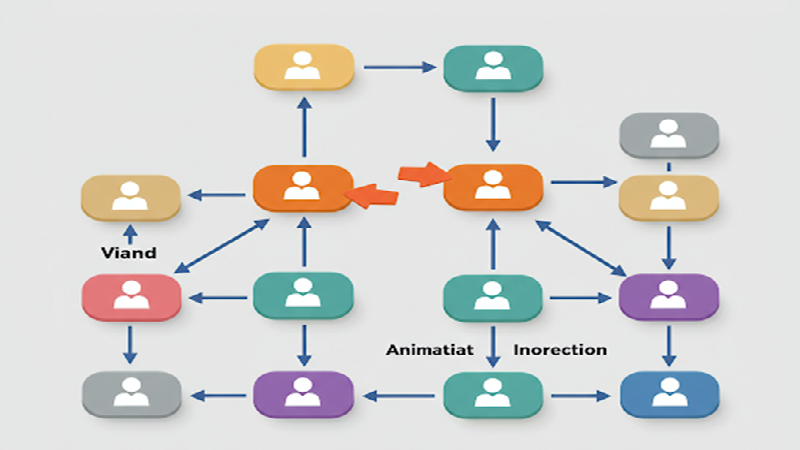
Change The Order in the OrgChart by Drag and Drop (Simple Example)

Highlight to the root on search in OrgChart JS

OrgChart JS Now Supports Export to PowerPoint
OrgChart JS Now Supports Export to PowerPoint

Dynamically changing an orgchart field

Project Timeline Chart

OrgChart Conditional Node Size

Add CSS on Export in OrgChart JS

OrgChart JS Angular Templates

Org Chart Web App with Node.js and Express

Loading on Demand with Family Tree JS 2

Dynamic Colors Organizational Chart

Charlie Chaplin Family Tree

Introducing Family Tree JS 2: The Next Generation is Here!

React OrgChart

Create and run an OrgChart Single Page Application with Node.js – beginner's guide.

Export and Import Org Chart to Excel

Adding Custom HTML Elements into OrgChart JS container

Еasily Create a Template in an OrgChart

Node Swapping in an Organizational Chart

Vladimir Putin Family Tree

Add Field Data in Expand button with OrgChart JS

Bill Gates Family Tree

Create a Tooltip for a ForeignObject Element Hover in OrgChart JS

Custom Aligning Nodes in a JavaScript Organizational Chart

Center and Zoom on Search Click in OrgChart JS

Create Multiline Group Titles in OrgChart JS

Adding Arrows in OrgChart JS Links

Show a Custom Edit Form for a node in OrgChart JS

Jeff Bezos Family Tree

How to Add Material Icons in OrgChart JS

Leonardo DiCaprio Family Tree
Visualizing Dual Reporting Structures with OrgChart JS

Exporting OrgChart JS to A4 PDF: A Step-by-Step Guide

Genghis Khan Family Tree: The Lineage of the Great Khan

OrgChart JS now support Export to Visio

New Export Option: childLevels in OrgChart JS

Elon Musk Family Tree

AI for OrgChart JS: Revolutionizing Organization Charts

Family Tree JS 2 (Preview)

d3 org chart

Our Family Tree App is Now on Android!

Why BALKAN OrgChart JS is the Best Organizational Chart Library

How to Create a JavaScript Flow Chart

How to Add an Organizational Chart to a Mobile Application

How to Create a JavaScript Organizational Chart

OrgChart JS Now Supports PDF Export Per Team

Introducing Family Tree App

Donald Trump Family Tree

Discover Your Roots: Build Your Family Tree with BALKAN App

JavaScript Organization Chart

Instantly create interactive, intuitive flowcharts in seconds

JavaScript Hierarchy Chart

Mermaid js alternative

Create Flowcharts in Seconds with Flow Chart JS: Your New Favorite JavaScript Library

Customizing Filter UI - Code of The Week

Zoom Slider - Code of The Week

Bookmarks - Code of The Week

Customizing Search Results - Code of The Week

Introducing Undo Redo - Code Of The Week

Price adjustment announcement
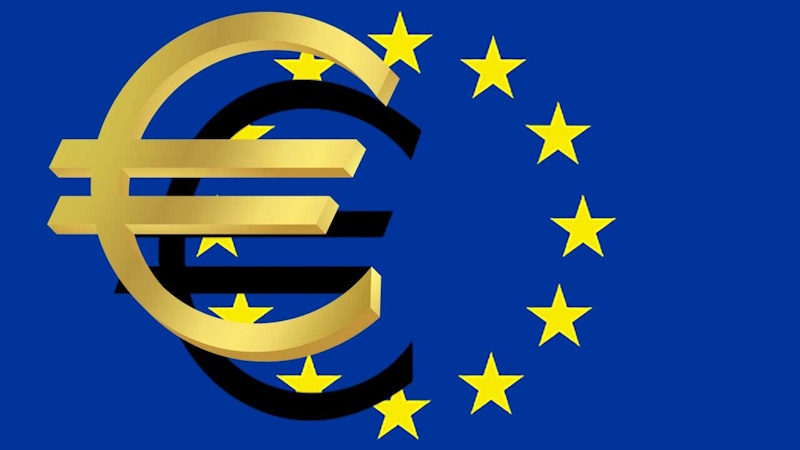
The price will increase for new customers

Buttons for adding family members to a family tree - Code of The Week

Levels - Code of The Week

Change node color from a button in the Edit Form - Code of The Week

Filter and Highlight Nodes - Code of The Week

Up Expanding - Code Of The Week

Programmatically move the chart - Code of The Week

Siblings in Family Tree JS - Code of The Week

Purple template - Code of The Week

Assistant With Children - Code of The Week

Conditional Layout - Code of The Week

Conditional Color - Code of the Week

Sriniz Family Tree Template - Code of The Week

Color Picker - Code of The Week

Add company logo as watermark in exported PDF documents - Code of The Week

Mind map - Code of The Week

Create relationship with circle menu - Code of The Week

Animated Photos - Code of the Week

Grouped Dotted Lines - Code Of The Week

Dotted Lines - Code Of The Week

Department Dynamic Title - Code Of The Week

Add expand button for partners - Code of the Week

Change the sub levels with Drag and Drop - Code of The Week

Custom Edit From using Popover - Code of the Week

Sub levels tag option - Code of the Week

Highlights search results directly on Org Chart nodes - Code of the Week

Code of the Week/Relationship maps and Business process diagrams

Search using field name abbreviations - Code of the Week

Dynamic Template - Code of the Week

Read and Write local CSV file using File API and Org Chart JS - Code of The Week

Organizational Chart Path Highlighting and Selection

Modern Template - Org Chart JS

Performance - Org Chart JS
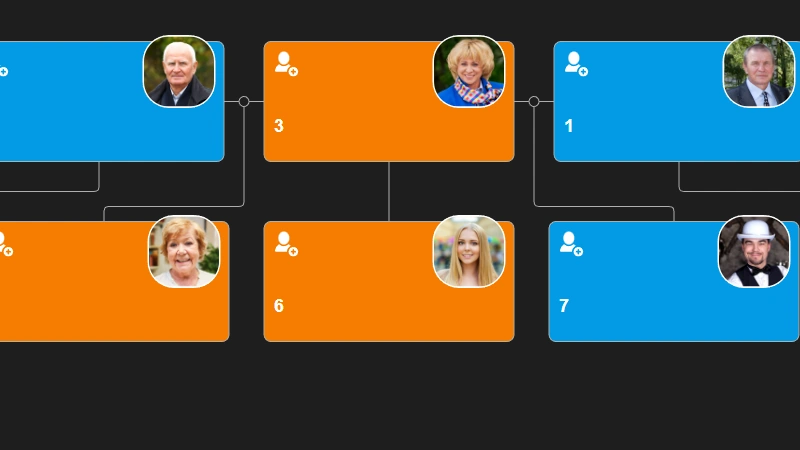
Single parent is supported in Family Tree JS
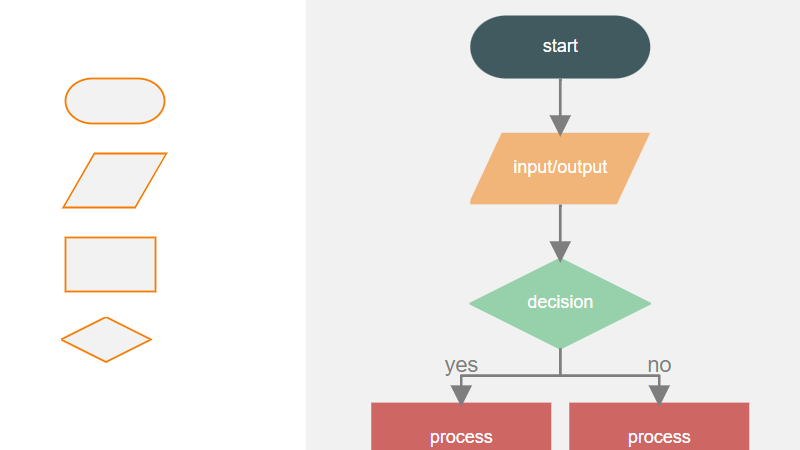
How To Develop a Flowchart Maker with Org Chart JS
How to upload a photo to Family Tree JS in .NET core
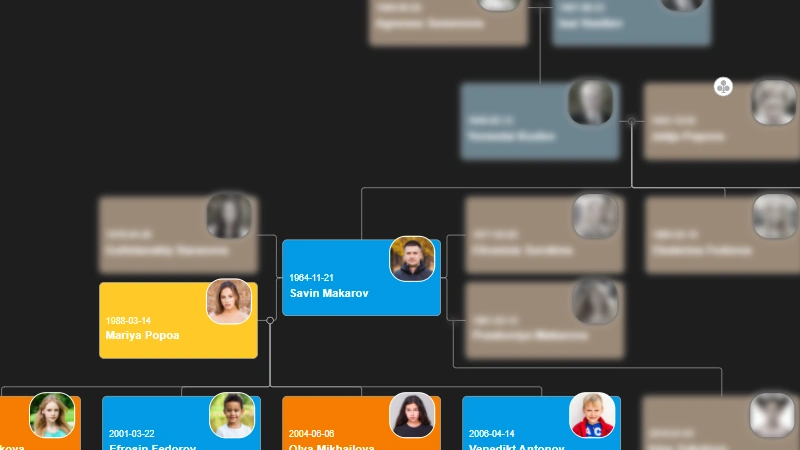
How to change the color of selected node - Family Tree JS
